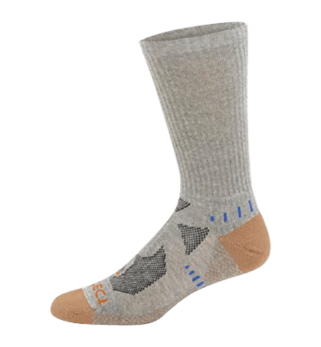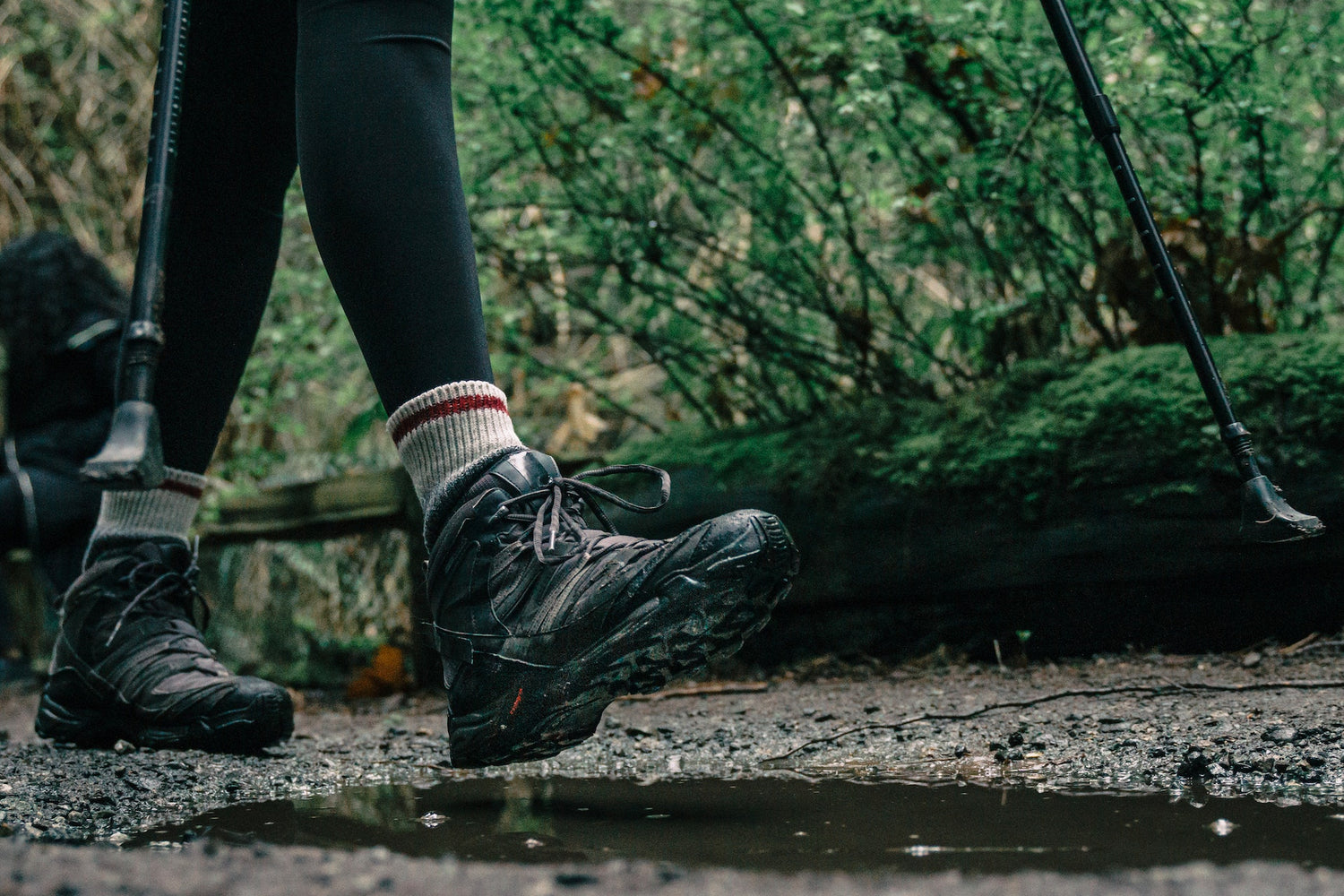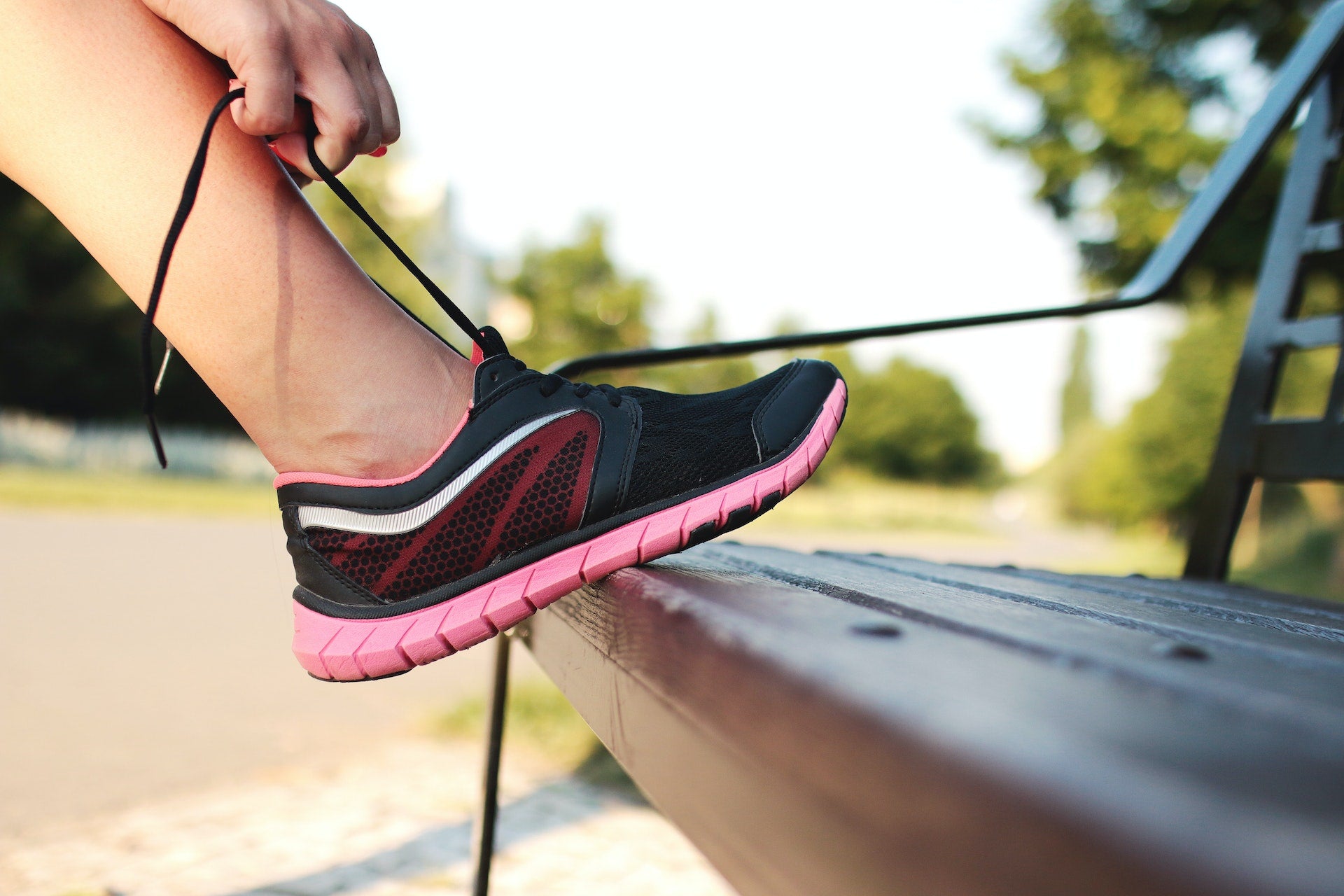
Choosing the right gear is crucial for an enjoyable experience when it comes to outdoor exploration. One often overlooked component is the right pair of hiking socks. These socks are designed to improve comfort, protect your feet, and enhance your overall performance on the trail.
In this guide, we will explore the world of hiking socks, discussing why they are essential, why compression socks have become popular, how to choose the appropriate tightness, and the best compression sock options for your next adventure.
What Are Hiking Socks?
Hiking socks are a must-have for outdoor enthusiasts. Made from high-quality materials like merino wool, nylon, and polyester offer moisture-wicking properties and cushioning for comfort on long treks.
They also have reinforced heel and toe areas for durability and come in different lengths to suit personal preferences and trail conditions. Investing in a pair of quality hiking socks is essential for foot health and performance.
Are Compression Socks Good For Hiking?
As a hiking enthusiast, you understand the right gear's importance. From sturdy boots to moisture-wicking clothing, hikers are particular about their choices. Compression socks have emerged as a popular addition to hiking gear due to their many benefits. But what makes them so effective?
Compression socks offer improved blood circulation, which is crucial when trekking through uneven terrain. The strain on your legs can cause blood to accumulate in your lower extremities, leading to discomfort and even serious conditions like deep vein thrombosis (DVT). Compression socks apply graduated pressure on your legs, which helps blood vessels function optimally, preventing such issues from arising.
In addition to improved circulation, compression socks provide excellent arch support. Hiking often involves traversing rugged landscapes with varying degrees of elevation changes. The constant strain on the feet can cause fatigue and pain in the arches. Compression socks are designed with reinforced arches that provide stability and alleviate stress in this crucial area.
Compression socks also have superior moisture-wicking capabilities, keeping your feet dry and reducing friction between your skin and footwear. They help prevent blisters and other foot ailments.
Wearing compression socks during hikes can aid in muscle recovery post-exercise. The continuous pressure applied by these garments helps reduce inflammation by facilitating better circulation of oxygen-rich blood to muscles that have been taxed during strenuous activities.
Many hikers report overall reduced leg fatigue when using compression socks during outdoor adventures. The compressive nature of the socks helps stabilize and support the muscles, reducing muscle vibration and subsequent fatigue. This can be particularly beneficial during long hikes or multi-day treks when the strain on your legs is sustained.
Compression socks are a highly beneficial addition to any hiking gear collection. By promoting better blood circulation, providing arch support, aiding in moisture management, assisting in muscle recovery, and reducing leg fatigue, they enhance your comfort, performance, and overall enjoyment of the great outdoors.
How Tight Should Hiking Socks Be?
Make sure they fit snugly around your feet and ankles without causing discomfort or constriction. Avoid socks that are too loose to prevent blisters and friction. Consider the thickness of the sock and personal preference when selecting the right level of tightness.
Strive for a balance between gentle compression and personal comfort for an enjoyable hiking experience.
How Long Should You Wear Compression Socks?
When deciding how long to wear compression socks for hiking, consider the intensity and duration of the hike. For shorter hikes, wear them during the activity. Wear them consistently for longer or more demanding hikes for improved circulation and muscle support.
Personal comfort is important, too, so remove them if necessary. Listen to your body and adjust accordingly.
The Best Compression Socks For Hiking
Grey Crew Cut Hiking Socks (Men)
 Grey Quarter Cut Hiking Socks (Men)
Grey Quarter Cut Hiking Socks (Men)









Leave a comment
This site is protected by hCaptcha and the hCaptcha Privacy Policy and Terms of Service apply.